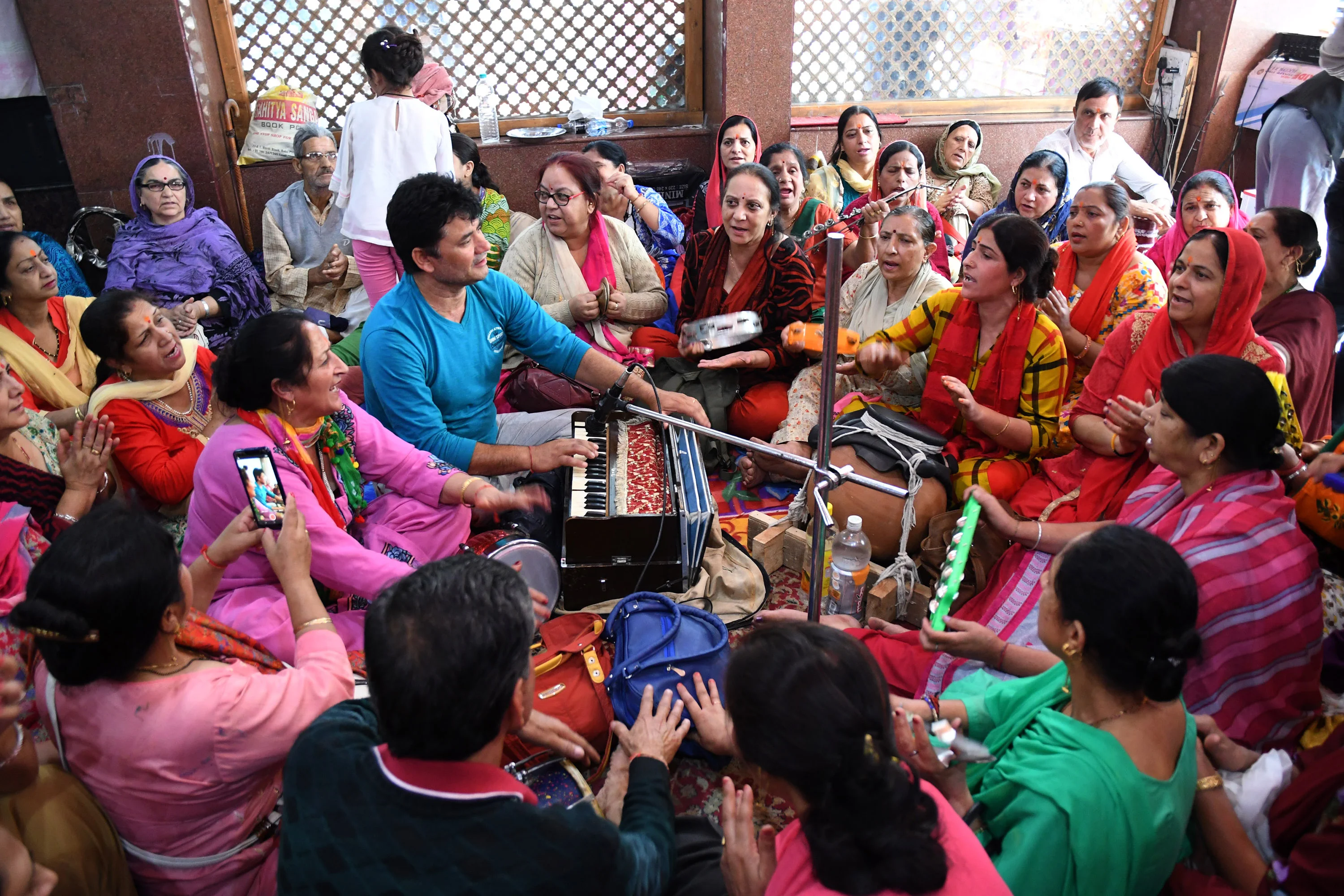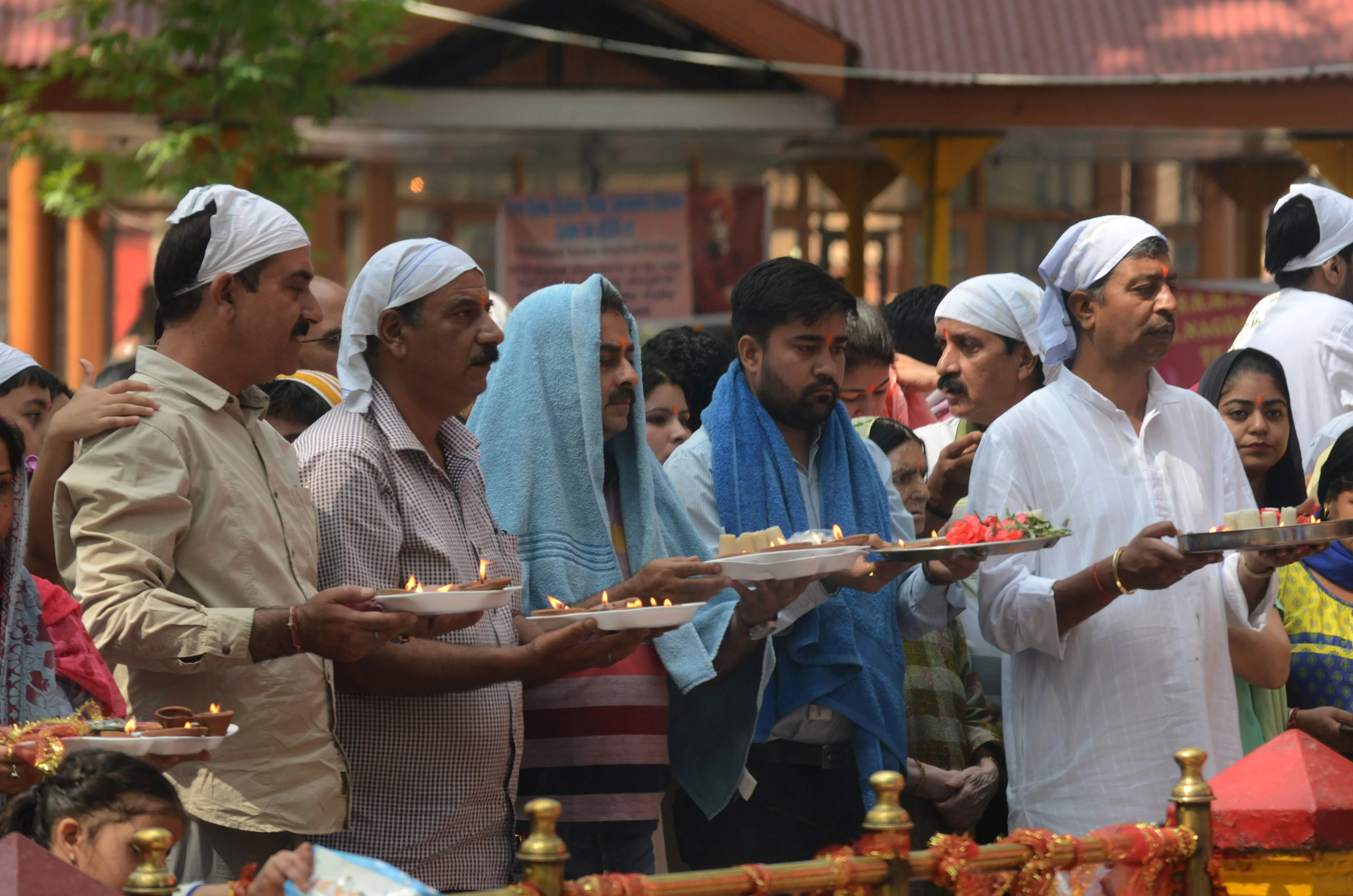
By Saumy Tripathi
“Hukkus Bukkus Telyi wan tsch kus
Onum Battoukh loddoum deygye
Hukkus Bukkus Telyi wan tsch kus
Onum Battoukh loddoum deygye
Shwaas Kichh Kichh Waamgano
Bramman Zaaran poyein chhokum
Teykes tyakkha banyi kyohow…”
This song is akin to Ring-Aring-A Roses, says Sakshi Mattoo as she tells me about Kashmiri Pandits and their culture.
Mattoo is the spokesperson of India 4 Kashmir, a pan Indian movement whose aim is to rehabilitate Kashmiri Pandits in the valley.
Although many stories have been done on the plight of the Kashmiri pandits, few have tried to bring attention to their culture which is unique and is a treasure in itself.
“Our community believes in the Trika philosophy which is the comprehensive system of Kashmir Shaivism and Agama,” she says. “The Shaiva shastras is an integral part of our lifestyle and all rites and rituals from childbirth to marriage to death are confined to this system.”
Indulekha Wanchoo left Kashmir in the 1950s but still carries some tradition to this date.
“There is a tradition in Kashmiri marriages called Posh Pooja in which the bride and groom are covered in a pashmina shawl and are worshipped as lord Shiva and Parvati. It is one of the most unique traditions and one which is alive to this day,” says Wanchoo.
“When I left the valley in the 1950s after my marriage and migrated to Delhi, people were shocked to know that no dowry was given in my marriage. They refused to believe that there was a whole Hindu community that did not adhere to this social evil.”
Several practices of the Kashmiri Pandits are uncommon in other parts of the country.
“We consume meat even though we are Pandits but we also don’t use any onions and garlic which made our habits more peculiar wherever we went especially in South India where people were shocked to know that we ate meat and the first time I ate garlic I spat it out and I have never tried it ever since,” Wanchoo says.
But after more than three decades of staying away from their homeland, the culture has to some extent diluted due to multi-culturalism.

Sanjay Kaw is a veteran journalist who works in the Asia Age and was the first journalist who predicted that the Babri Masjid would fall. He spent his youth in Kashmir before the exodus.
“What I imagine when I hear Kashmir and what my children imagine are two completely different images,” Kaw says. “They don’t know the language, they don’t know the land. Now, we are also facing issues after staying away from home for long.”
Meanwhile, Mattoo tells that due to efforts of the community the younger generations have been apprised of the issues of the community. She said that the Indian government for years was indifferent to the pain of the Pandits making them even more determined to uphold their traditions for making their tribe a distinctive in the overall play of the Sanatan Dharma.
But, as Kaw says, several other facets of the Kashmiri culture are now declining or amalgamating into other cultures.
During Maha Shiv Ratri, every year, poojas were conducted and the Pandits were so busy that these poojas used to go on till 2 in the night. “But now the availability of the pandit has declined,” he says. “People now use cassettes to conduct those poojas. Even the last rites are now converted into a religious package of 12 days where you can perform all the rituals.”
Another cultural shock for the community has come from the waning number of authentic Kashmiri cooks who used to add delight to their special occasions. “With the special Kashmiri bakeries, we used to gather in the morning for breakfast,” Kaw recalls. “But now, those bakers are no longer there. There was one shop in Vasundhra enclave where people would come from long distance to eat. We also have a shortage of Kashmiri foods such as Kashmiri Saag, Ganth Gobhi which are not easily available.”
Festivals are also an important part of any Hindu culture, and so is the case with Kashmiri Pandits. There were several festivals like Nav Himpat Utsav, also known as sheen and Madan Triyodasi which is dedicated to Karna Deva, the god of love. “Kashmiri Pandit is intellectually a very rich community and so many of them who were forced out of the valley have settled abroad and so it is hard for the new generation there to adhere to the Kashmiri culture,” Wangnoo says.
Even Kaw says that it will be very difficult for the younger generations to return to Kashmir as they have been raised in a culture where remnants of the Kashmiri culture are only present in the homes.
Among other things, Mattoo says, the Indian government should preserve the Sharada script which was used to write Kashmiri and is an integral part of their culture.
The three people have their three different takes on the questions raised but they all have a distinctive point that is based on their experiences. Indulekha Wanchoo may have left Kashmir half a century ago but she will never eat garlic as Sakshi Mattoo will continue to raise her voice for the betterment of the community and preserve a culture that should be read more.
Kashmiri Pandits practised a culture with no dowry, absence of casteism, and where girl education was prioritised something that the majority of the country has still not managed to achieve and in them, there is a dream that India one day hopes to achieve.
“Let me tell you a funny story,” Wanchoo says. “In 1956, I went out to the market in Mumbai wearing my Kashmiri earrings [Dejihiur] and two Gujarati women began following me until one of them asked, ‘What is this?’ The other women answered, ‘Oh! Don’t you know it’s a hearing aid device.’ So, yes, being Kashmiri makes us different.”
Follow this link to join our WhatsApp group: Join Now
Be Part of Quality Journalism |
Quality journalism takes a lot of time, money and hard work to produce and despite all the hardships we still do it. Our reporters and editors are working overtime in Kashmir and beyond to cover what you care about, break big stories, and expose injustices that can change lives. Today more people are reading Kashmir Observer than ever, but only a handful are paying while advertising revenues are falling fast. |
| ACT NOW |
| MONTHLY | Rs 100 | |
| YEARLY | Rs 1000 | |
| LIFETIME | Rs 10000 | |












